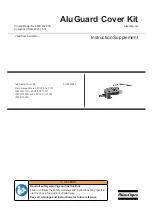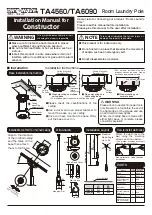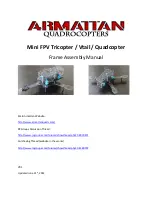
Manual, F/T Sensor, Axia90
Document #9620-05-B-Axia90-03
Pinnacle Park • 1031 Goodworth Drive • Apex, NC 27539 • Tel:+1 919.772.0115 • Fax:+1 919.772.8259 •
B-28
Symptom: The F/T values
do not match
expected values,
for example: the
F/T values are
fluctuating but
are higher than a
known applied load.
Cause:
The sensor may be in a mode that reports gage data
instead of F/T data.
Solution:
Gage data is not a 1:1 correlation to F/T axis data. View
F/T data instead of gage data; refer to the applicable
communication interface ATI manual in
.
Cause:
The sensor outputs data in counts. The user must convert the counts to
calibration units.
Solution:
Counts must be divided by the Counts per Force (CpF)
or Counts per Torque (CpT) in order to convert them to
calibration units such as N and Nm.
In addition to CpF and CpT, depending on the
communication protocol, the values may be further scaled
by a 16-bit scale factor. 16-bit counts must be divided by
(CpF or CpT ÷ 16-bit scale factor) in order to convert to
calibration units.
Cause:
If once the F/T readings are converted to calibration units and exceed
the sensor’s calibration range per
, the
reported values are inaccurate and the sensor may be overloaded.
Solution:
Check the status code. For information on how to
read and interpret the sensor’s status code, refer
to the applicable communication interface ATI
manual in
.
Unmount the sensor. Improper mounting methods can
induce high loads in the sensor.
After reinstalling the sensor and without applying a load,
if errors such as “Sensing Range Exceeded”, “Gage Out
of Range”, or “Gage Broken” persist, the sensor is likely
permanently damaged due to overload.



































